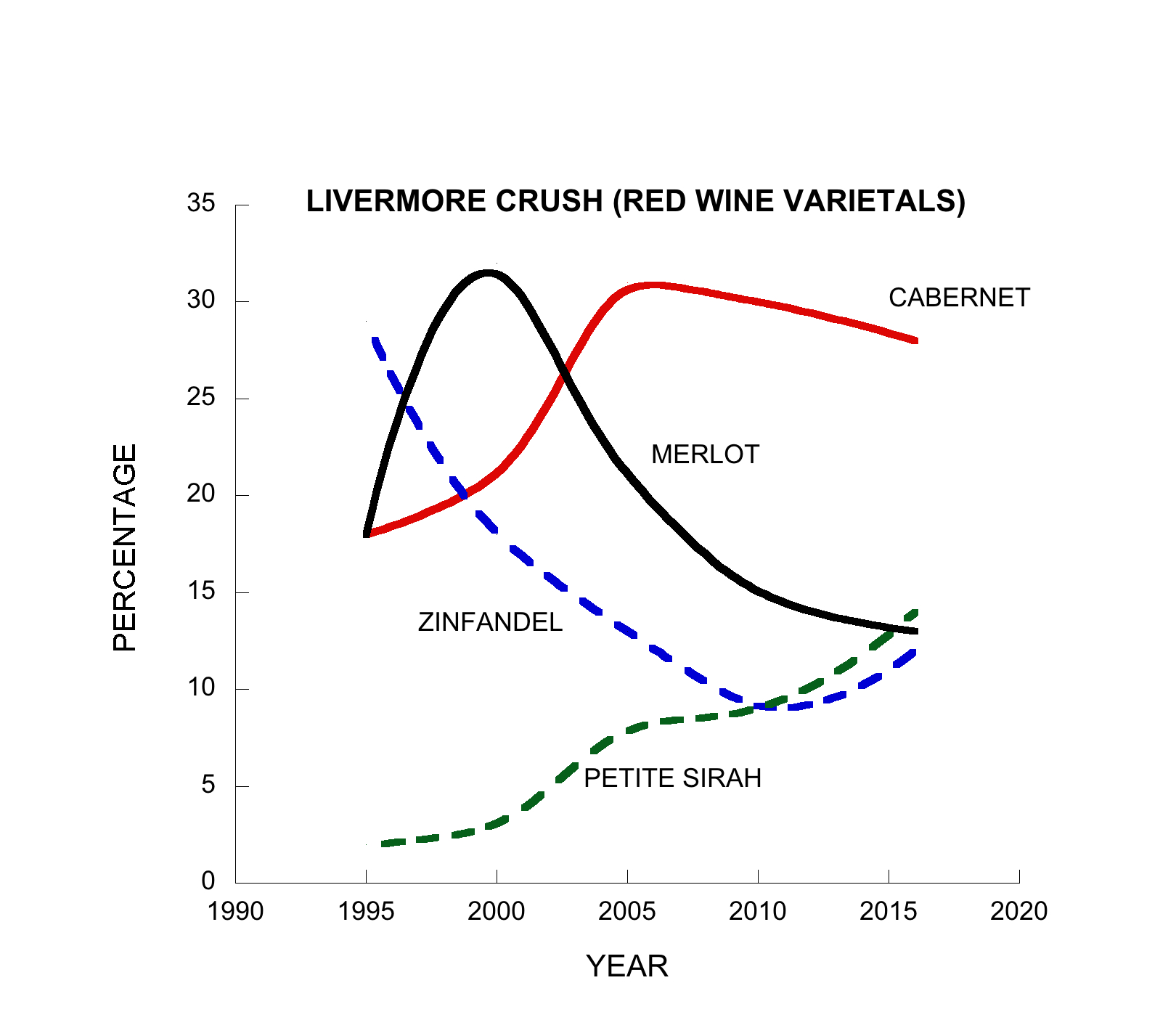2016 Livermore Harvest

The California Department of Food and Agriculture released its preliminary Grape Crush Report for the 2016 harvest. The report provides useful information about California’s annual grape harvest, listing the grape varieties, harvest tonnage, sugar levels, and prices charged by growers. Over the years, I have found that the report provides a window into consumer trends. For example, twenty-five years ago Zinfandel reigned supreme, a result of the public thirst for the ‘white zinfandel’ of the late ‘90s. By 2000, Zinfandel had been replaced by Merlot as the most popular varietal, although the love affair with Merlot proved short lived. Since it peaked fifteen years ago, the amount of Merlot harvested each year has trended downwards. It only now is showing signs of stabilizing.
In Livermore Valley, Cabernet Sauvignon is the most harvested red-wine variety. This is not surprising. Cabernet Sauvignon commands the highest price and remains the most popular consumer varietal. The variety also performs exceptionally well here. What is surprising, at least to me, is that in 2016 Petite Sirah rose to second place, nudging ahead of both Zinfandel and Merlot.
Petite Sirah plantings have been increasing statewide for the past decade, as the cultivar is valued for its supporting role in red wine blends, a category of increasing demand among millennials. However, nowhere does Petite Sirah command as high a percentage of total harvest as in Livermore Valley. Statewide, Petite Sirah contributes less than 5% to the total red wine crush. Even in Northern San Joaquin County, the largest grower of Petite Sirah, it contributes only 8 percent to the total crush. Livermore Valley is the outlier, as today, Petite Sirah accounts for almost 15% of our red wind crush.
This should please many of our local wine enthusiasts, who have been advocating for Livermore Valley to adopt Petite Sirah as its signature varietal. No doubt these advocates will be encouraged by this latest harvest report. But I feel they still face serious headwinds with getting the larger public to adopt their enthusiasm for this variety. Despite years of effort, and even a short-lived Petite Sirah I Love You Society, Petite Sirah remains a bit player in the world of fine wine. Petite Sirah, outside of Livermore Valley, rarely appears on a wine list. Or, when it does, it is often an inexpensive wine in the ‘other’ varietals category. Petite Sirah will always be viewed by many winemakers as a varietal best suited for blending.
I view the latest crush report with concern that the new plantings of Petite Sirah are replacing heritage varieties of greater importance. Notably, two historic Livermore cultivars, Syrah and Tempranillo, are dwindling to obscurity. Yet these cultivars perform exceptionally well in our valley, and are worthy of our attention. In Europe, these are considered noble varietals, and are the backbone of many of the world’s finest wines.
Most of all, I am concerned for Cabernet Franc. A century ago, this varietal was considered among the best in Livermore Valley, better here than in its ancestral homelands in Bordeaux and the Loire. But, today, Cabernet Franc in Livermore Valley is disappearing. It accounted for only one percent of our red wine crush in 2016. I feel Cabernet Franc may have been a victim of fashion. But fashion changes, and perhaps Cabernet Franc will have its day once again. Keep the faith.


